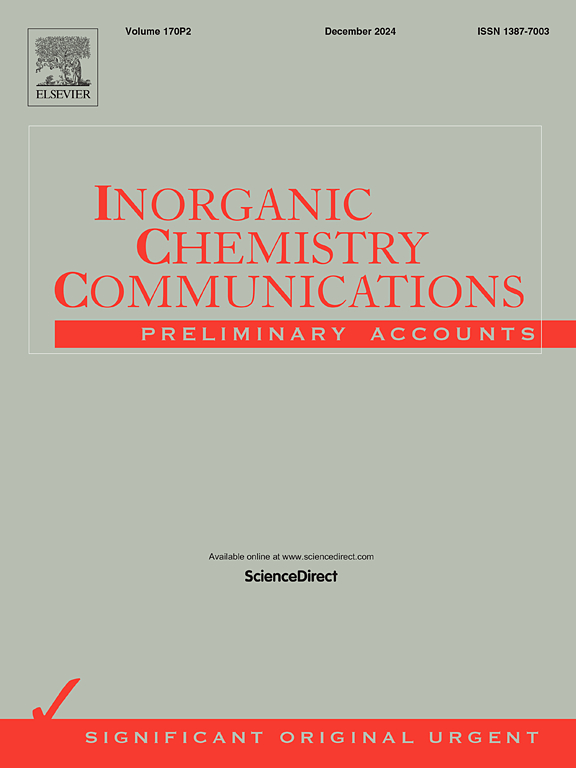胶体量子点的先进合成和生物医学应用:成像、药物输送和治疗学方面的创新
IF 4.4
3区 化学
Q1 CHEMISTRY, INORGANIC & NUCLEAR
引用次数: 0
摘要
胶体量子点(CQDs)是一种半导体纳米粒子,由于量子约束效应而具有不同寻常的光学和电学特性,因此在许多应用中都是通用的。人们最感兴趣的一个特点是它们的大小和组成在发光方面具有很大的可调性,特别是在癌症治疗和生物医学方面的应用。最近,热注射、加热和微波辅助合成量子点的成功,使量子点的大小、形状和表面化学性质得到了更好的控制,从而提高了它们在生物成像、药物传递和光动力治疗方面的性能。在癌症治疗中,量子点被应用于靶向药物传递和成像增强,因为它们具有优越的亮度和抗光降解性。然而,还存在一些其他重大挑战,例如与某些量子点中重金属相关的生物相容性和毒性问题。目前的研究正在发展更安全、更具有生物相容性的量子点,以及针对它们进行精确治疗的方法。关于量子点的合成方法将继续发展,并将在一个平台上的诊断和治疗功能的结合中发挥重要作用-在综合癌症治疗中推进治疗学。本文章由计算机程序翻译,如有差异,请以英文原文为准。

Advanced synthesis and biomedical applications of colloidal quantum dots: Innovations in Imaging, drug delivery, and theranostics
Colloidal quantum dots (CQDs) are semiconductor nanoparticles with unusual optical and electrical characteristics due to quantum confinement effects, and hence are versatile in a number of applications. One characteristic that has been of utmost interest is their great tunability in light emission by size and composition, especially in applications for cancer therapy and biomedicine. The recent success of hot-injection, heat-up, and microwave-assisted syntheses of QDs has enabled better control in the size, shape, and surface chemistry of QDs, leading to their performance improvement in bioimaging, drug delivery, and photodynamic therapy. In cancer therapy, QDs are applied to targeted drug delivery and imaging enhancement because of their superior brightness and resistance to photodegradation. However, there are some other significant challenges, such as biocompatibility and toxicity issues linked to heavy metals in some QDs. Research is now evolving both safer, more biocompatible QDs and ways to target them for precision in treatment. The development of synthesis methods will continue with regard to quantum dots and will play an important role in the combination of diagnostic and therapeutic functions on one platform—advancing theranostics within integrated cancer therapy.
求助全文
通过发布文献求助,成功后即可免费获取论文全文。
去求助
来源期刊

Inorganic Chemistry Communications
化学-无机化学与核化学
CiteScore
5.50
自引率
7.90%
发文量
1013
审稿时长
53 days
期刊介绍:
Launched in January 1998, Inorganic Chemistry Communications is an international journal dedicated to the rapid publication of short communications in the major areas of inorganic, organometallic and supramolecular chemistry. Topics include synthetic and reaction chemistry, kinetics and mechanisms of reactions, bioinorganic chemistry, photochemistry and the use of metal and organometallic compounds in stoichiometric and catalytic synthesis or organic compounds.
 求助内容:
求助内容: 应助结果提醒方式:
应助结果提醒方式:


